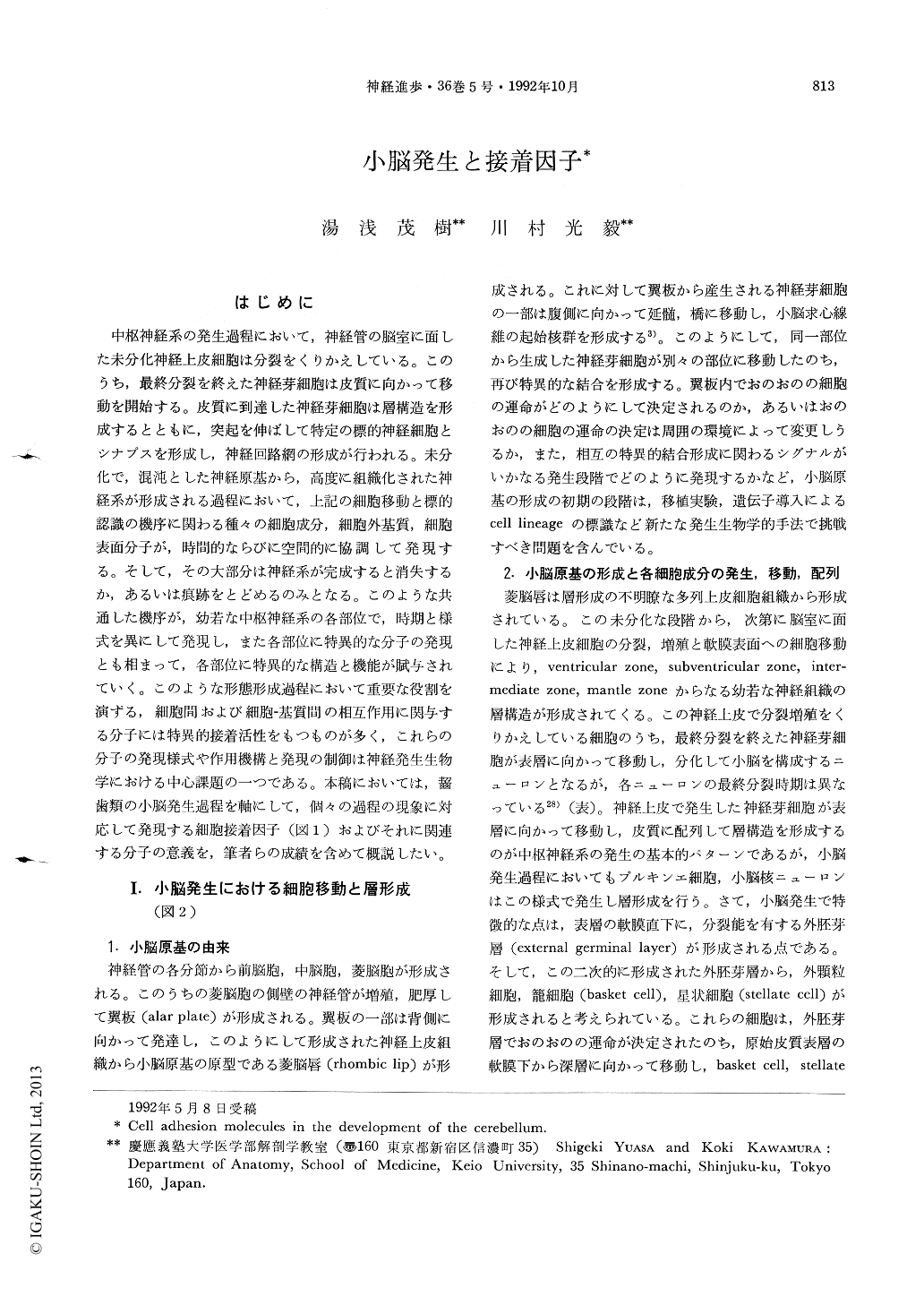Japanese
English
- 有料閲覧
- Abstract 文献概要
- 1ページ目 Look Inside
はじめに
中枢神経系の発生過程において,神経管の脳室に面した未分化神経上皮細胞は分裂をくりかえしている。このうち,最終分裂を終えた神経芽細胞は皮質に向かって移動を開始する。皮質に到達した神経芽細胞は層構造を形成するとともに,突起を伸ばして特定の標的神経細胞とシナプスを形成し,神経回路網の形成が行われる。未分化で,混沌とした神経原基から,高度に組織化された神経系が形成される過程において,上記の細胞移動と標的認識の機序に関わる種々の細胞成分,細胞外基質,細胞表面分子が,時間的ならびに空間的に協調して発現する。そして,その大部分は神経系が完成すると消失するか,あるいは痕跡をとどめるのみとなる。このような共通した機序が,幼若な中枢神経系の各部位で,時期と様式を異にして発現し,また各部位に特異的な分子の発現とも相まって,各部位に特異的な構造と機能が賦与されていく。このような形態形成過程において重要な役割を演ずる,細胞間および細胞―基質間の相互作用に関与する分子には特異的接着活性をもつものが多く,これらの分子の発現様式や作用機構と発現の制御は神経発生生物学における中心課題の一つである。本稿においては,齧歯類の小脳発生過程を軸にして,個々の過程の現象に対応して発現する細胞接着因子(図1)およびそれに関連する分子の意義を,筆者らの成績を含めて概説したい。
A variety of cell adhesion molecules play important roles in the processes of cell migration, axonal elongation and synaptogenesis during the development of the central nervous system. In this article, we review the mode of expression and the mechanism of action of cell adhesion moleculesoccurring in the developing cerebellum. Significance of the molecules in the formation of the cortical structure and the development of the neural network are also discussed.
In the process of migration of granule cells from the external germinal layer into the internal granular layer, migratory granule cells are guided by contact with processes of Bergmann glia. The interaction between neurons and glia are mediated by many cell adhesion molecules such as NCAM, NgCAM (L1), tenascin (cytotactin, J1), astrotactin, adhesion molecule on glia (AMOG), thrombospondin or cerebellar soluble lectin (CSL). The neuronal migration is facilitated by means of cycles of attachment and detachment between neurons and glia. Tissue plasminogen activator is associated with the surface of migratory granule cells and it facilitates the migration by degradation of adhesion molecules by proteolysis through activation of the proteolytic enzyme.

Copyright © 1992, Igaku-Shoin Ltd. All rights reserved.


